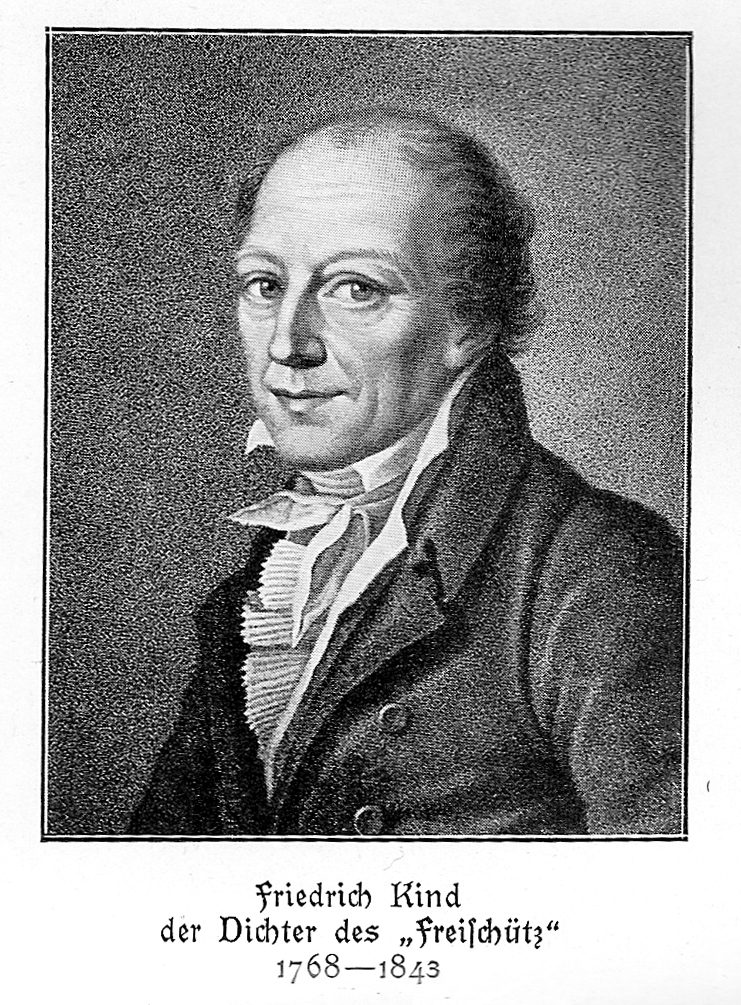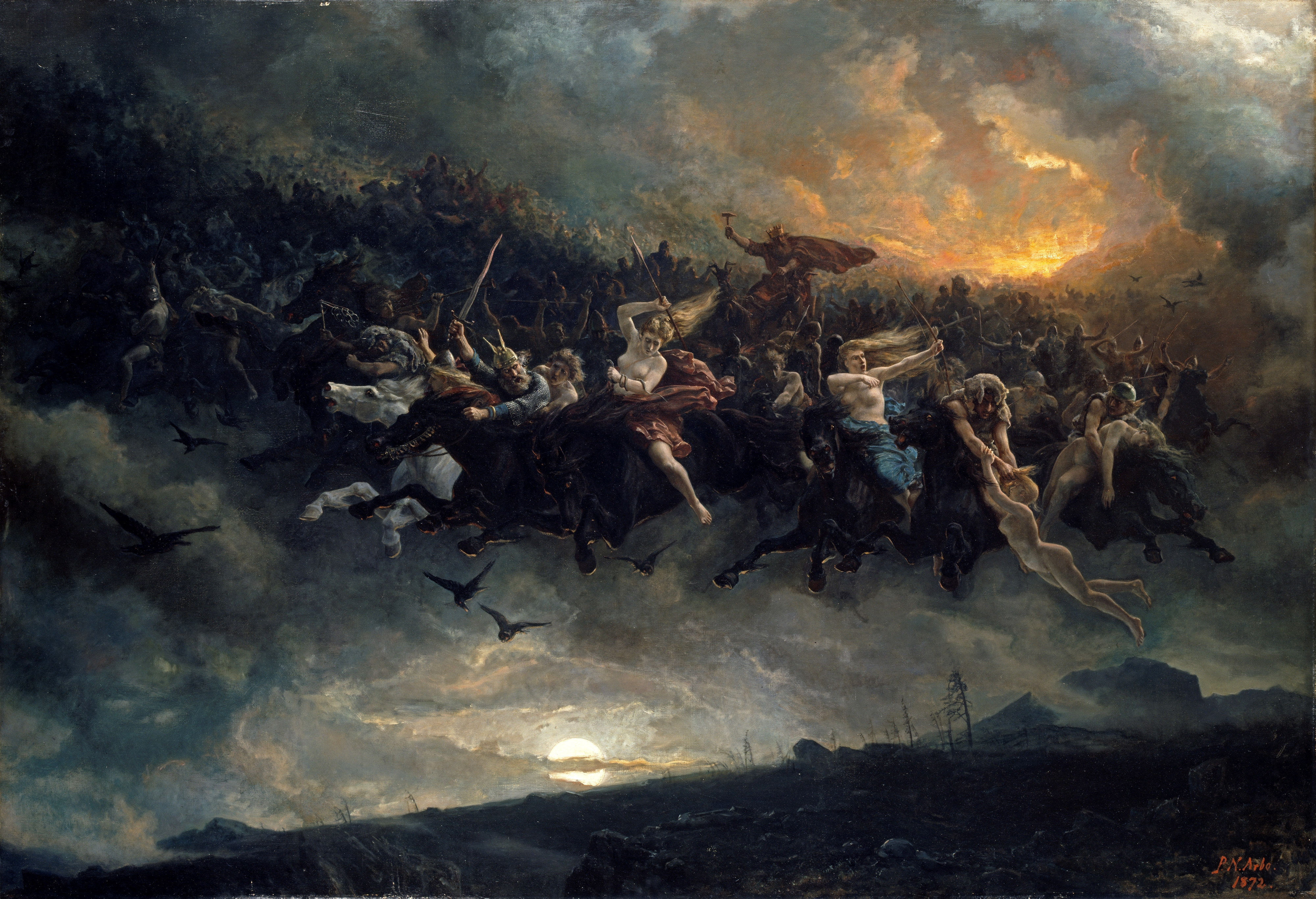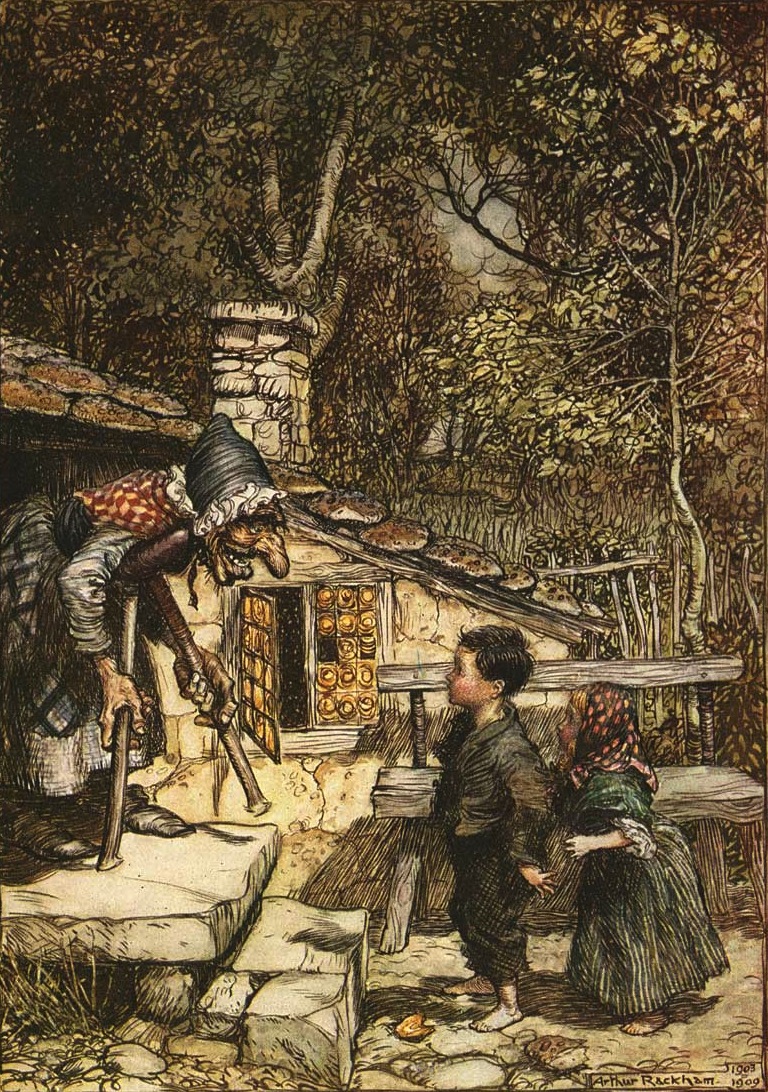|
Freischütz
In German folklore, the figure of the Freischütz is a marksman who, by a contract with the devil, has obtained a certain number of bullets destined to hit without fail whatever object he wishes. As the legend is usually told, six of the magic bullets (German: ''Freikugeln'') are thus subservient to the marksman's will, but the seventh is at the absolute disposal of the devil himself. Apel's Freischütz Stories about the Freischütz were especially common in Germany during the 14th, 15th and 16th centuries. But the tale became widely circulated in 1810 when Johann August Apel included it as the first tale in the first volume of the ''Gespensterbuch'' ('Book of Ghosts'). Thomas de Quincey translated Apel's tale into English as "The Fatal Marksman" in ''Popular Tales and Romances of the Northern Nations'' (1823), and another translation was published under the title "Der Freischütz; or, The Magic Balls" in George Borrow's ''Tales of the Wild and the Wonderful'' (1825). Weber's ope ... [...More Info...] [...Related Items...] OR: [Wikipedia] [Google] [Baidu] |
Der Freischütz
' ( J. 277, Op. 77 ''The Marksman'' or ''The Freeshooter'') is a German opera with spoken dialogue in three acts by Carl Maria von Weber with a libretto by Friedrich Kind, based on a story by Johann August Apel and Friedrich Laun from their 1810 collection '' Gespensterbuch''. It premiered on 18 June 1821 at the Schauspielhaus Berlin. It is considered the first German Romantic opera. The opera's plot is mainly based on August Apel's tale "Der Freischütz" from the '' Gespensterbuch'' though the hermit, Kaspar and Ännchen are new to Kind's libretto. That Weber's tunes were just German folk music is a common misconception. Its unearthly portrayal of the supernatural in the famous Wolf's Glen scene has been described as "the most expressive rendering of the gruesome that is to be found in a musical score". Performance history The reception of ''Der Freischütz'' surpassed Weber's own hopes and it quickly became an international success, with productions in Vienna the same ye ... [...More Info...] [...Related Items...] OR: [Wikipedia] [Google] [Baidu] |
Gespensterbuch
The (literally 'Ghost Book' or 'Book of Spectres') is a collection of German ghost stories written by August Apel and Friedrich Laun and published in five volumes between 1810–1815. The fifth volume was also published as the first volume of Apel and Laun's ' (1815–1818), which served as a continuation of the series. Stories Translation "" was translated by Thomas De Quincey and published anonymously as "The Fatal Marksman" in ''Popular Tales and Romances of the Northern Nations'' (1823). It was also translated as "Der Freischütz; or, The Magic Balls" by George Henry Borrow in ''Tales of the Wild and the Wonderful'' (1825), and anonymously as ''The Original Legend of Der Freischütz, or the Free Shot'' (1833). De Quincey began a translation of "" in 1824, but it was never published. "" was translated in ''The Literary Magnet'' (vol 2, 1824). Jean-Baptiste Benoît Eyriès translated "", "", "", "", and "" into French in (1812). The first three of these were then transla ... [...More Info...] [...Related Items...] OR: [Wikipedia] [Google] [Baidu] |
Carl Maria Von Weber
Carl Maria Friedrich Ernst von Weber (18 or 19 November 17865 June 1826) was a German composer, conductor, virtuoso pianist, guitarist, and critic who was one of the first significant composers of the Romantic era. Best known for his operas, he was a crucial figure in the development of German '' Romantische Oper'' (German Romantic opera). Throughout his youth, his father, , relentlessly moved the family between Hamburg, Salzburg, Freiberg, Augsburg and Vienna. Consequently he studied with many teachers – his father, Johann Peter Heuschkel, Michael Haydn, Giovanni Valesi, Johann Nepomuk Kalcher and Georg Joseph Vogler – under whose supervision he composed four operas, none of which survive complete. He had a modest output of non-operatic music, which includes two symphonies; a viola concerto; bassoon concerti; piano pieces such as Konzertstück in F minor and '' Invitation to the Dance''; and many pieces that featured the clarinet, usually written for the virtuos ... [...More Info...] [...Related Items...] OR: [Wikipedia] [Google] [Baidu] |
Johann August Apel
Johann August Apel (17 September 1771 – 9 August 1816) was a German writer and jurist. Apel was born and died in Leipzig. Influence ''Die Jägerbraut'' was his version of "Der Freischütz", and it was published as the first story of the first volume of his and Friedrich Laun's '' Gespensterbuch'' horror anthology (1810). Friedrich Kind and Carl Maria von Weber drew on this version as the main source for the story of their opera ''Der Freischütz'' (1821). On recommendation of Carl von Brühl they abandoned their working title ''The Hunter's Bride'' to the better known title of Apel's tale. Two of his other short stories ("Die Bilder der Ahnen" and "Die schwarze Kammer") were included in Jean-Baptiste Benoît Eyriès' '' Fantasmagoriana'' (1812), which was read by Lord Byron, Mary Shelley, Percy Bysshe Shelley, John William Polidori and Claire Clairmont at the Villa Diodati in Cologny, Switzerland during the Year Without a Summer, inspiring them to write their own ghost ... [...More Info...] [...Related Items...] OR: [Wikipedia] [Google] [Baidu] |
Popular Tales And Romances Of The Northern Nations
''Popular Tales and Romances of the Northern Nations'' is an anthology of translated German stories in three volumes, published in 1823. Publication The book was announced as being prepared for publication in January and February 1823. All three volumes of the book were published at the same time in July 1823, by Simpkin & Marshall and John Henry Bohte in London. Contemporary adverts state it as being published by J. Anderson Jr. in Edinburgh as well. Several of the stories were reprinted, such as by Anderson in ''The Common-Place Book of Prose'' (1825), and ''Legends of Terror!'' (1826) with illustrations. Translators The book was published without crediting the original authors of the stories, or their translators. John George Cochrane attributed the translations to "Messrs. Leeds, Browning, De Quincey, and Mrs. Hodgskin". According to Henry George Bohn the translations "are said to be by Gillies, Geo. Soane and De Quincy". George Willis added "Leeds, &c." to this list t ... [...More Info...] [...Related Items...] OR: [Wikipedia] [Google] [Baidu] |
Johann Friedrich Kind
Johann Friedrich Kind (4 March 1768, in Leipzig – 24 June 1843 in Dresden) was a German dramatist, most famous for writing the libretto for Carl Maria von Weber's opera '' Der Freischütz'' (1821). Biography He studied law, and began his law practice in Dresden in 1793. In 1814, he abandoned his law practice to devote himself exclusively to literary work. He was a very industrious writer in many fields of literature, in all of which he was popular in his day with a large class of readers. With Winkler, he edited the ''Abendzeitung'' from 1817 to 1826. Though he published five volumes of sentimental and popular poetry, his poetry is the weakest of his literary efforts; the 1894 edition of the reputed Brockhaus encyclopedia critiqued it as being "smooth in form but without the least bit of originality."Brockhaus' Konversations-Lexikon. 14th ed., Leipzig, Berlin and Vienna 1894; Vol. 10, p. 339. His popular tales have somewhat more merit than his poems; but it is in the line o ... [...More Info...] [...Related Items...] OR: [Wikipedia] [Google] [Baidu] |
Wild Huntsman
The Wild Hunt is a folklore motif (Motif E501 in Stith Thompson's Motif-Index of Folk-Literature) that occurs in the folklore of various northern European cultures. Wild Hunts typically involve a chase led by a mythological figure escorted by a ghostly or supernatural group of hunters engaged in pursuit. The leader of the hunt is often a named figure associated with Odin in Germanic legends, but may variously be a historical or legendary figure like Theodoric the Great, the Danish king , the Welsh psychopomp , biblical figures such as Herod, Cain, Gabriel, or the Devil, or an unidentified lost soul or spirit either male or female. The hunters are generally the souls of the dead or ghostly dogs, sometimes fairies, valkyries, or elves. Seeing the Wild Hunt was thought to forebode some catastrophe such as war or plague, or at best the death of the one who witnessed it. People encountering the Hunt might also be abducted to the underworld or the fairy kingdom. In some instances, ... [...More Info...] [...Related Items...] OR: [Wikipedia] [Google] [Baidu] |
German Folklore
German folklore is the folk tradition which has developed in Germany over a number of centuries. Partially it can be also found in Austria. Characteristics It shares many characteristics with Nordic folklore and English folklore due to their origins in a common Germanic mythology. It reflects a similar mix of influences: a pre-Christian pantheon and other beings equivalent to those of Norse mythology; magical characters (sometimes recognizably pre-Christian) associated with Christian festivals, and various regional 'character' stories. As in Scandinavia, when belief in the old gods disappeared, remnants of the mythos persisted: Holda, a "supernatural" patron of spinning; the Lorelei, a dangerous Rhine siren derived from 19th-century literature; the spirit Berchta (also known as Perchta); the Weiße Frauen, a water spirit said to protect children; the Doppelgänger, supernatural beings said to resemble the exactly similar appearance of determined person; the Wild H ... [...More Info...] [...Related Items...] OR: [Wikipedia] [Google] [Baidu] |
Deal With The Devil
A deal with the Devil (also called a Faustian bargain or Mephistophelian bargain) is a cultural motif exemplified by the legend of Faust and the figure of Mephistopheles, as well as being elemental to many Christian traditions. According to traditional Christian belief about witchcraft, the pact is between a person and the Devil or another demon, trading a soul for diabolical favours, which vary by the tale, but tend to include youth, knowledge, wealth, fame and power. It was also believed that some people made this type of pact just as a sign of recognising the minion as their master, in exchange for nothing. The bargain is a dangerous one, as the price of the Fiend's service is the wagerer's soul. The tale may have a moralising end, with eternal damnation for the foolhardy venturer. Conversely, it may have a comic twist, in which a wily peasant outwits the devil, characteristically on a technical point. The person making the pact sometimes tries to outwit the devil, but ... [...More Info...] [...Related Items...] OR: [Wikipedia] [Google] [Baidu] |
Thomas De Quincey
Thomas Penson De Quincey (; 15 August 17858 December 1859) was an English writer, essayist, and literary critic, best known for his '' Confessions of an English Opium-Eater'' (1821). Many scholars suggest that in publishing this work De Quincey inaugurated the tradition of addiction literature in the West. Life and work Child and student Thomas Penson De Quincey was born at 86 Cross Street, Manchester, Lancashire. His father, a successful merchant with an interest in literature, died when De Quincey was quite young. Soon after his birth, the family went to ''The Farm'' and then later to Greenheys, a larger country house in Chorlton-on-Medlock near Manchester. In 1796, three years after the death of his father, Thomas Quincey, his mother – the erstwhile Elizabeth Penson – took the name "De Quincey".Morrison, Robert. "Thomas De Quincey: Chronology" TDQ Homepage. Kingston: Queen's University, 2013. That same year, De Quincey's mother moved to Bath and enrolled him at King E ... [...More Info...] [...Related Items...] OR: [Wikipedia] [Google] [Baidu] |
George Borrow
George Henry Borrow (5 July 1803 – 26 July 1881) was an English writer of novels and of travel based on personal experiences in Europe. His travels gave him a close affinity with the Romani people of Europe, who figure strongly in his work. His best-known books are ''The Bible in Spain'' and the novels '' Lavengro'' and '' The Romany Rye'', set in his time with the English ''Romanichal'' (Gypsies). Early life Borrow was born at East Dereham, Norfolk, the son of Thomas Borrow (1758–1824), an army recruiting officer, and Ann Perfrement (1772–1858), a farmer's daughter, . His father, a lieutenant with the West Norfolk Militia, was quartered at the prisoner-of-war camp at Norman Cross from July 1811 to April 1813, and George spent his ninth and tenth years in the barracks there. He was educated at the Royal High School of Edinburgh and Norwich Grammar School. Borrow studied law, but languages and literature became his main interests. In 1825, he began his first major Europe ... [...More Info...] [...Related Items...] OR: [Wikipedia] [Google] [Baidu] |
Libretto
A libretto (Italian for "booklet") is the text used in, or intended for, an extended musical work such as an opera, operetta, masque, oratorio, cantata or musical. The term ''libretto'' is also sometimes used to refer to the text of major liturgical works, such as the Mass, requiem and sacred cantata, or the story line of a ballet. ''Libretto'' (; plural ''libretti'' ), from Italian, is the diminutive of the word ''libro'' ("book"). Sometimes other-language equivalents are used for libretti in that language, ''livret'' for French works, ''Textbuch'' for German and ''libreto'' for Spanish. A libretto is distinct from a synopsis or scenario of the plot, in that the libretto contains all the words and stage directions, while a synopsis summarizes the plot. Some ballet historians also use the word ''libretto'' to refer to the 15 to 40 page books which were on sale to 19th century ballet audiences in Paris and contained a very detailed description of the ballet's story, scene by sce ... [...More Info...] [...Related Items...] OR: [Wikipedia] [Google] [Baidu] |


_The_Spectre_Barber.jpg)





